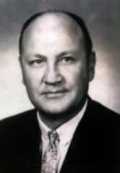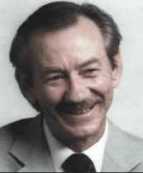Sunday, June 7, 2015
While England instituted a three-digit emergency assistance number in 1937, the concept did not receive serious consideration in the United State for another 30 years. In February 1967 President Lyndon Johnson’s Commission on Law Enforcement and Administration of Justice recommended, “Wherever practical, a single police telephone number should be established, at least within a metropolitan area and eventually over the entire United States, comparable to the telephone company’s long-distance information number.” The concept was also supported by other federal government agencies and firefighters who acknowledged that fire related deaths would be reduced if emergency notifications were improved.
The Federal Communications Commission (FCC) and AT&T, the single largest telephone carrier at the time, began to develop the system. On Friday January 12, 1968, AT&T announced that 9-1-1 would be designated the universal emergency number in the United States. Congress supported AT&Ts proposal and passed legislation that identified 9-1-1 as the only emergency assistance number in the US. A Bell System policy was established to absorb the cost of central office modifications and any additions necessary to accommodate the 9-1-1 code as part of the general rate base.1 Local communities that implemented 9-1-1 service would be responsible for network trunk costs, equipment, and vendors who ran the service.
There are many suggestions why the 9-1-1 was selected. It was easy an easy sequence to remember and in the era of rotary telephones, one could dial “1” quickly. Additionally, 9-1-1 had not been previously assigned as an area, office, or service code. Finally the code addressed technical switching challenges.
The day AT&T announced that they would implement the system Bob Gallagher, the president of the independent Alabama Telephone Co (ATC) decided he would beat AT&T and implement 911 first. He called Robert Fitzgerald, an ATC plant manager, who identified Haleyville Alabama as a perfect site. Fitzgerald designed the circuitry and with a small technical team installed the equipment in only 35 days. The first 911 call was placed by Alabama Speaker of the House Rankin Fite from Haleyville City Hall to U.S. Rep. Tom Bevill (Dem.) at the city’s police station on February 16.
Local 9-1-1- service spread slowly across the country. According to the National Emergency Number Association 17% of the population had the service by 1976, 50% by 1987, and 93% by 1999. Today 96% of the geographic US has some type of 9-1-1 service.
To commemorate the City of Troy’s 60th Anniversary in 2015, we will publish a different story each day that highlights a person, discovery, or event that occurred locally, regionally, nationally, or even globally between 1955 and 2015 and that helped shape our lives and our community. We will try to post stories on important anniversary dates, but we also realize that dates are less critical than content and context. We will include the facts related to controversial stories, allowing our readers to form their own opinions. We invite you to read and comment on the stories. Your suggestions for topics are also welcome and can be posted on our Facebook page, www.facebook.com/TroyHistoricVillage. You can also email stories or ideas to the 365 Story Editor at ed@thvmail.org.








